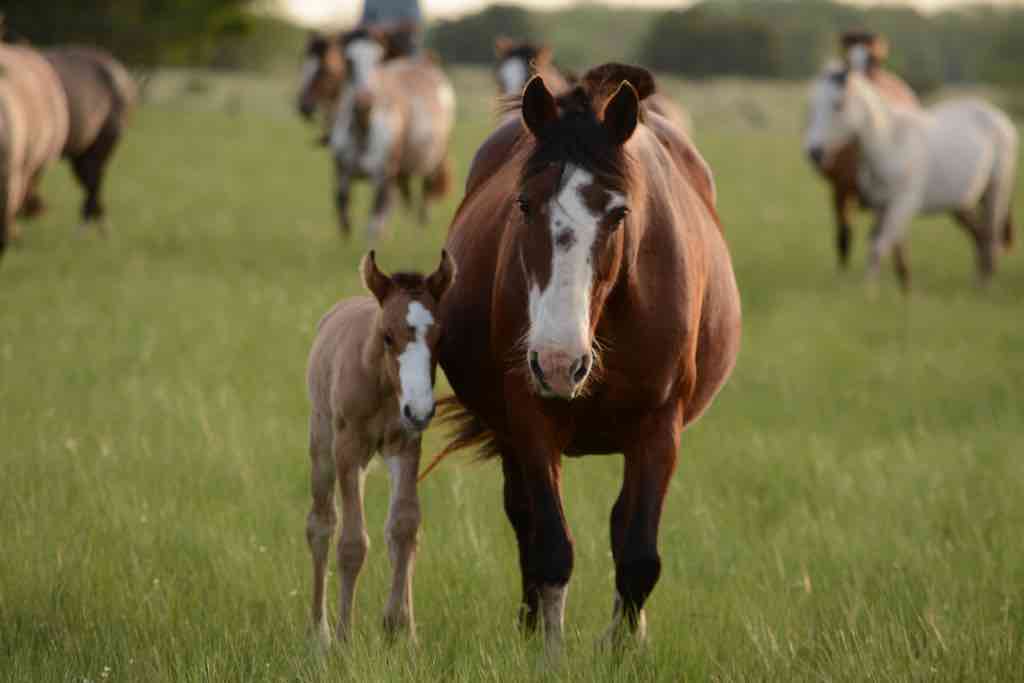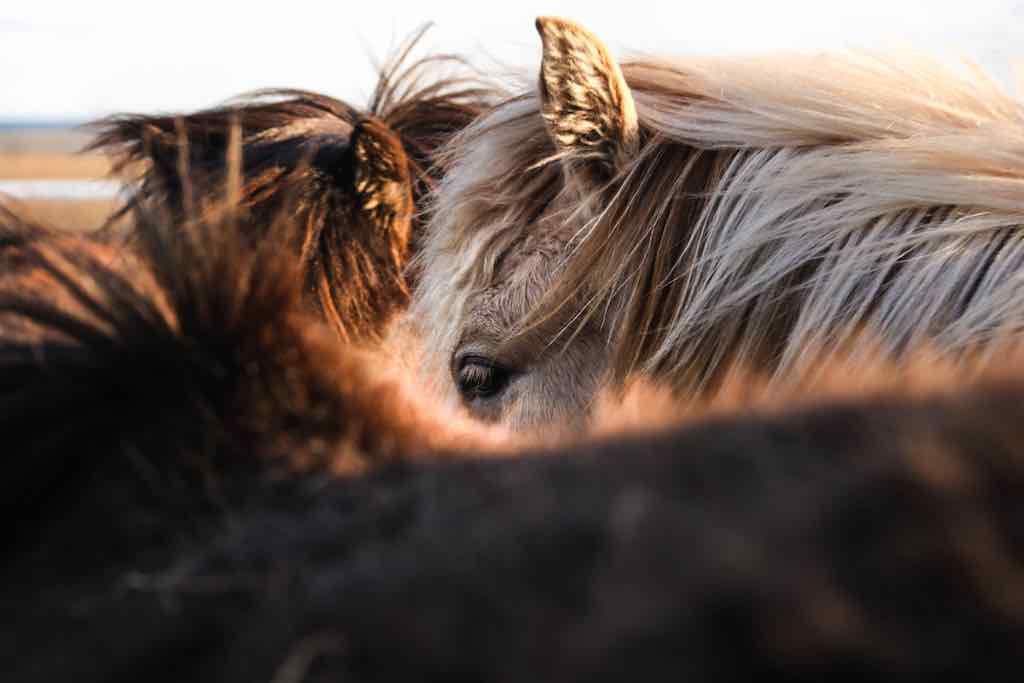Horses are animals that can form strong bonds and comradery while they are with their mate. During mating and separating, horses can act in various ways, displaying different behaviours. Understanding how horses mate and apart can improve their overall health and well-being. In this article, we’ll delve deeper into the dynamics of horses matting and separating, the physical signs of horses mating, the nature of horse mating and separating, the benefits of horses mating, how to encourage horses to mate, the different types of horse mating, the role of hormones in horse mating and separating, tips on minimizing unwanted horse separation and recognizing healthy horse mating relationships.
The Physical Signs of Horses Mating
The most notable sign of two horses getting close is that they will frequent each other. Often, they will approach one another with their heads lowered and necks stretched out. Horses may also posture with their heads held high, though this is more common the day before they mate. The stallion will stand side-by-side with the mare, often nickering softly. The stallion is likely to mount the mare while they are together.
The mare may also show signs of readiness for mating, such as lifting her tail and urinating. This is a sign of submission and indicates that she is ready to accept the stallion. The stallion may also display signs of readiness, such as pawing the ground or snorting. This is a sign of dominance and indicates that he is ready to mate.

The Nature of Horse Mating and Separating
When two horses get together for mating, the mare will usually be in heat for about five days. During this time, the horse’s body is unusually receptive to the stallion’s advances. The majority of horse couples will stay together for only a few days, and the mare will usually go back into heat between seven to fourteen days after the first mating. Although it’s not necessary, separation may occur either naturally or with intervention from humans. If there is an upcoming long vacation or relocation, humans may choose to separate the couple to minimize stress.
In some cases, the mare may be separated from the stallion for a few days before being reintroduced. This can help to reset the mare’s hormones and make her more receptive to the stallion’s advances. Additionally, if the mare is not receptive to the stallion, the couple may be separated and reintroduced at a later date. This can help to ensure that the mare is in the right frame of mind for mating.
The Benefits of Horses Mating
By allowing two horses to bond and mate, humans help these animals to build emotional connections. In addition to emotional enrichment, mating can also be beneficial in terms of reproduction if the mare is able to become pregnant. This is especially important if these horses are being bred for sporting or show purposes. Thus allowing them to mate ensures that their genes are more efficiently passed on.
Mating also helps to strengthen the bond between the two horses, which can be beneficial for both animals. This bond can help to reduce stress and anxiety in the horses, as well as providing them with companionship. Furthermore, it can also help to improve the overall health of the horses, as they are able to share the workload of grazing and other activities. This can help to reduce the risk of injury or illness in the horses.
How to Encourage Horses to Mate
To increase the likelihood of successful mating, you can provide a safe environment for your horses; ensure that the stallion is physically capable of mating; and make sure that the mare is in good health. You can also offer food rewards as a reward for mating behaviour, or use a light scent – such as lavender – to create a more inviting atmosphere for breeding. You should also keep an eye on both horses’ health during and after mating to ensure safe conception and foaling.
It is important to remember that horses are social animals, and that they need to feel comfortable and secure in order to mate. Make sure that the stallion and mare are familiar with each other, and that they have been given plenty of time to get to know one another. If possible, introduce them to each other in a controlled environment, such as a paddock or stable, before allowing them to mate.
It is also important to ensure that the stallion and mare are both in good physical condition before mating. Make sure that they are both well-fed and healthy, and that they have been given plenty of exercise. This will help to ensure that they are both physically capable of mating, and that the mating process is successful.
Understanding the Different Types of Horse Mating
Different types of horse mating may occur depending on the pair’s comfort level. An open-mating situation, for example, involves a stallion visiting multiple mares during a timeframe. In contrast, closed-mating requires a stallion to remain with a single mare until she has been successfully inseminated. Further behaviors may also occur depending on the species or breed of horse.
In some cases, a stallion may display aggressive behavior towards a mare during mating. This is often seen in wild horses, where the stallion will attempt to control the mare’s movements and keep her from leaving the area. In domestic horses, however, this behavior is usually not seen, as the stallion is more likely to be gentle and cooperative with the mare.
In addition to the physical behaviors of mating, there are also certain hormonal changes that occur in both the stallion and mare. In the stallion, testosterone levels increase, while in the mare, estrogen and progesterone levels increase. These hormones are important for successful mating, as they help to regulate the reproductive cycle of the horse.
The Role of Hormones in Horse Mating and Separating
Hormones play a large role in regulating the behaviours associated with horse mating and separating. During courtship, which typically occurs about 24 hours before copulation, hormones like testosterone and oestrogen help both partners recognize each other as mates. During separation, these hormones help regulate moods and behaviours. Reduced levels of oxytocin and increased levels of serotonin may also help reduce any potential aggression between mares or stallions.
In addition, hormones like prolactin and oxytocin are released during copulation, which helps to create a bond between the two horses. This bond is further strengthened by the release of endorphins, which can help to reduce stress and create a feeling of pleasure. After copulation, the hormones progesterone and relaxin are released, which help to maintain the bond between the two horses and ensure that the mare is able to carry the foal to term.
Tips on Minimizing Unwanted Horse Separations
To reduce unwanted separation between stallions and mares, you should adjust your accommodation accordingly – providing separate areas for stallions and mares so that they can interact with one another without interfering with their own breeding habits. Additionally, you should observe their interactions closely to prevent them from getting too aggressive with one another. Monitoring hormone levels is also an important factor that can determine how two horses are feeling before they are separated.
It is also important to provide adequate space for the horses to move around and exercise. This will help to reduce stress levels and keep them from becoming too agitated. Additionally, providing plenty of hay and fresh water can help to keep the horses calm and content. Finally, it is important to ensure that the horses are well-fed and healthy, as this can help to reduce the risk of separation.
In addition to providing the right environment for the horses, it is also important to provide them with the right amount of attention. Spending time with the horses and getting to know their individual personalities can help to create a bond between the two animals, which can help to reduce the risk of separation. Additionally, providing the horses with regular grooming and exercise can help to keep them healthy and content, which can also help to reduce the risk of separation.
How to Recognize Signs of Healthy Horse Mating Relationships
A healthy horse mating relationship can be determined by observing the behavior of both horses before and after meeting. A good sign is that both horses will make eye contact before they begin grazing in one another’s company. Additionally, if they make sounds like nickering or whinnying as they pass each other, this could imply that they are fond of one another. Lastly, if both horses remain calm during copulation or grazing together, this is likely indicative of a strong connection between them.
In conclusion, knowing how horses interact during mating and separating can prove helpful in understanding how best to provide care and support them in their relationship. Whether your goal is improve their health or help plan their future together as parents, understanding the dynamics of horse mating can be extremely useful in achieving your goals.
It is also important to note that horses may display different behaviors when mating with different partners. For example, a horse may be more relaxed and affectionate with one partner, while being more aggressive and territorial with another. By observing the behavior of the horses in different mating scenarios, you can gain a better understanding of their individual preferences and needs.

